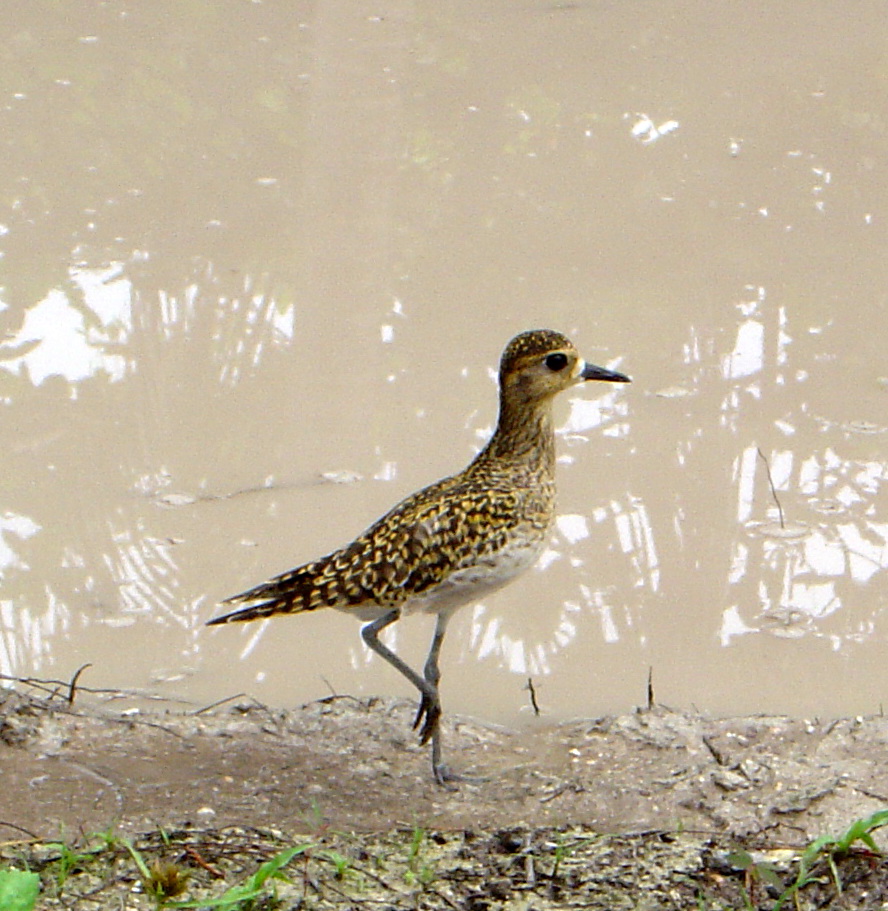Published in the Ocean Watch column, Honolulu Star-Advertiser © Susan Scott
September 6, 2010
 America’s first Labor Day was celebrated in New York on Tuesday, Sept. 5, 1882, as a “workingmen’s holiday.” Since then, the day (changed in 1884 to be the first Monday in September) has also come to mean the end of summer.
America’s first Labor Day was celebrated in New York on Tuesday, Sept. 5, 1882, as a “workingmen’s holiday.” Since then, the day (changed in 1884 to be the first Monday in September) has also come to mean the end of summer.
As is often the case, we Hawaii residents see things a little differently. Labor Day is as popular a holiday here as it is in other states, but our cue that summer is ending arrives on the wing. We know autumn is closing in when our Pacific golden plovers, or kolea, begin arriving for the winter.
Hawaii hosts other migratory shorebirds, but we know the kolea best because these graceful, solitary birds winter in the same spot year after year. When that spot is your yard, you can look forward to years of bird-watching. Kolea can live at least 25 years.
Although they remain wild birds, some plovers come to recognize their yards’ caretakers, learning over time that these people aren’t threats. If you feed your plover (they’re crazy about hard-boiled eggs) you may have a winter pet for years to come.
Adult kolea begin returning from their Alaska breeding grounds in August. The earliest are females, tuckered out, I imagine, from laying their four eggs. Males soon follow; fledglings get here last. All fly here nonstop and arrive tired and hungry.
This year, the earliest e-mail notice I received with kolea news came from Ira Tagawa. “I saw the first kolea on Monday, July 26. I thought it was an early return. Have these enchanting birds started their long journey back already?”
Some first-year, injured or undernourished birds aren’t up to the nonstop, 3,000-mile (one-way) journey and spend the summer in Hawaii. If you haven’t seen the bird all summer, though, and one day it’s there, it likely came back early.
Birds return early if eggs fail to hatch or hatchlings die. Causes for this can be an exceptionally cold Arctic spring, or death by predators such as hawks, falcons and Arctic foxes. Sometimes caribou and reindeer trample plover nests and eat plover eggs.
On Aug. 2, I receive an unsigned e-mail titled simply “Kolea.” The message: “last week … 3 at Diamond Head Cemetery and at least 12 in the field adjacent to Kaelepulu Elem. School.”
Since then, the birds have continued to trickle in. One amusing e-mail came from a reader, Joanne: “I am ecstatic to tell you that our wonderful Golden plovers have returned to Lanikai — at Bluestone to be exact!! At approx. 4:26:19 PM today I spotted Maile at her usual territory near my bldg. I called out her name and whistled and she started coming closer with her funny little run and stop approach.”
What tickled me about this letter, besides the bird coming when she was called, is that unknown to Joanne, I live in the same condominium complex. Joanne and I have since met, but I haven’t yet met Maile.
I don’t have names for my kolea, because I live next to a golf course and have an entire troupe to watch and enjoy. Most of those birds are back now, performing their dainty ballet all over that immense lawn. I hear their calls — Chu-EET! Chu-EET! — day and night. A golf course, where bugs are plentiful and cats can’t hide, must be heaven to those famished birds.
Last week, while giving a slide show about Palmyra to a group of friends, a photo of a Pacific golden plover came up. “Kolea!” my friends’ little girl called out.
A lot of us are calling out the same word. Summer must be over.